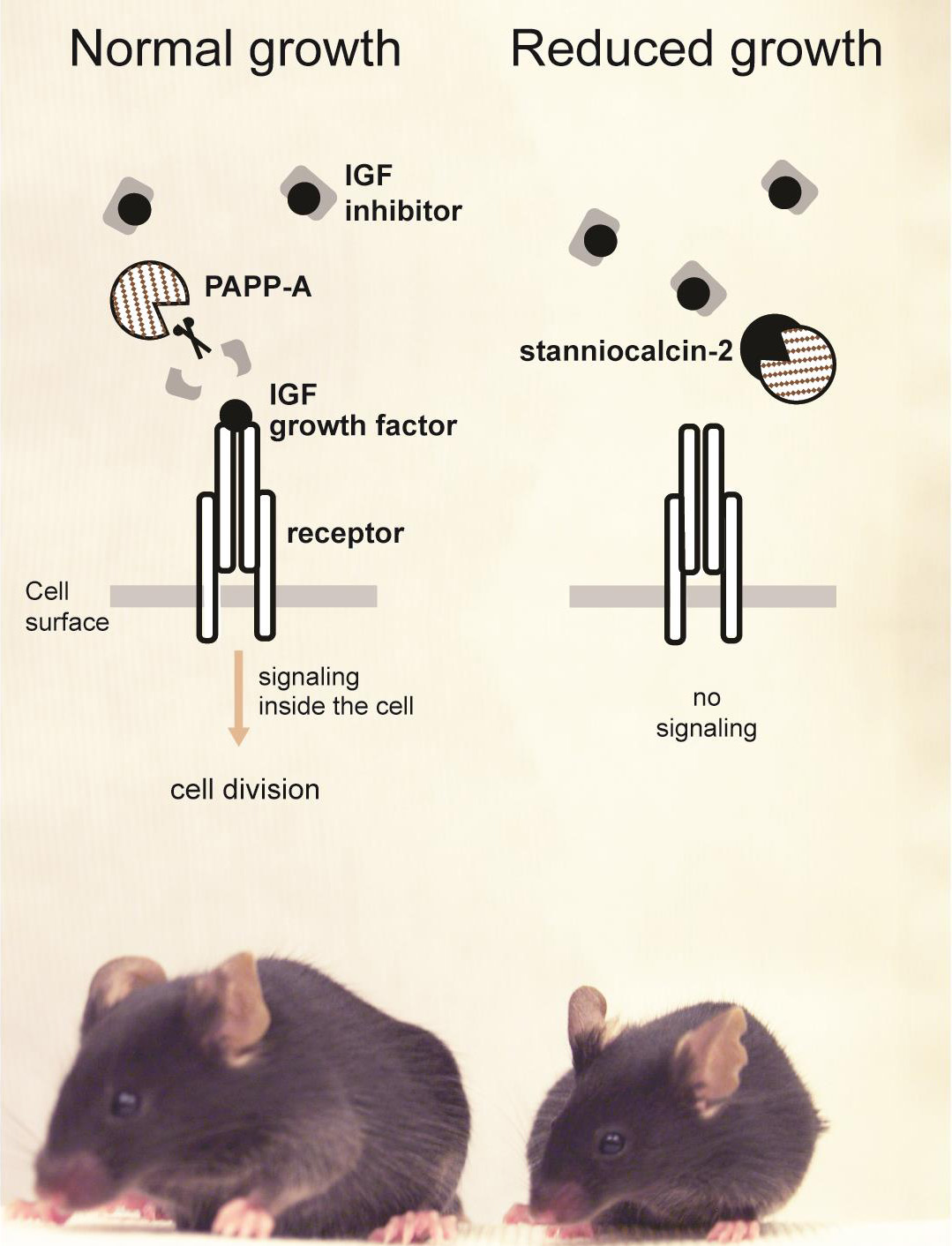Protein found to be the cause of small growth
The stanniocalcin-2 protein is very important for cellular growth, and a team of researchers has now discovered how it works. This could be significant for understanding growth in tissue such as cancer cells.


Researchers in Claus Oxvig’s laboratory at the Department of Molecular Biology and Genetics, Aarhus University, have identified a protein – stanniocalcin-2 – that helps regulate mammalian body size. Stanniocalcin-2 has been known for a number of years, and it is found in all mammals. However, even though it has been the subject of studies in several hundred articles, it is only now that the function of the protein has been discovered. The researchers studied the biochemical properties of stanniocalcin-2. In order to understand how the protein works in living organisms, they produced mice that overexpress stanniocalcin-2.
“When mice artificially produce too much stanniocalcin-2, they only grow to half the size of normal mice. It’s the entire mouse that’s smaller. The head, body and legs are smaller and the tail is thinner,” says PhD student Malene Runge Jepsen, main author of the article just published by the team of researchers.
Stanniocalcin-2 creates disorder in a network of proteins that regulate growth factors just outside the cell. By binding to an enzyme called PAPP-A, stanniocalcin-2 disrupts the top link in the chain, so the cells divide less frequently (see figure). Both muscles and bones therefore end up growing less if the level of stanniocalcin-2 is high.
The gene that codes for stanniocalcin-2 also helps determine the size of mammals such as dogs. Due to targeted breeding for more than two centuries, dogs exhibit extreme differences in size, even though they belong to the same animal species. This means that breeding very small dogs has also resulted in animals that produce a considerable amount of stanniocalcin-2.
“The very smallest dogs carry a variant of the gene that produces a high level of stanniocalcin-2. There are about a handful of genes in dogs that determine their size, but to be very small like Chihuahuas, the dogs have to produce a lot of stanniocalcin-2. On the other hand, large dogs typically produce a normal amount of stanniocalcin-2 – and always in breeds such as Great Danes. This knowledge has been obtained via genetic studies. It’s just that so far, no one has understood how it worked at the molecular level,” explains Malene Runge Jepsen.
The direct linking of stanniocalcin-2 with the regulation of cellular growth makes it possible to understand mechanisms connected with a number of different diseases. Both PAPP-A and stanniocalcin-2 have been associated with diseases such as cancer in humans – without being clear that the effect of one molecule can be cancelled out by the other.
“There’s some interesting work ahead of us in relation to understanding more molecular details. We’d also like to identify opportunities for making use of stanniocalcin-2 as a prototype pharmaceutical, and we’ve actually already achieved interesting results in disease models based on mice,” says Professor Claus Oxvig.
The results have just been published in the highly esteemed Journal of Biological Chemistry.
More information
PhD student Malene Runge Jepsen
Department of Molecular Biology and Genetics
Aarhus University
malenerj@mbg.au.dk
and
Professor Claus Oxvig
Department of Molecular Biology and Genetics
Aarhus University
co@mbg.au.dk – +45 3036 2460
